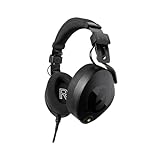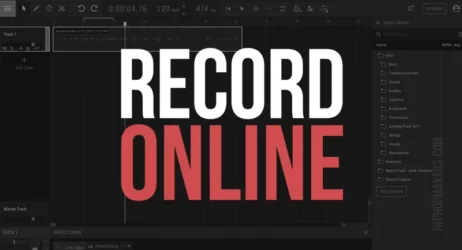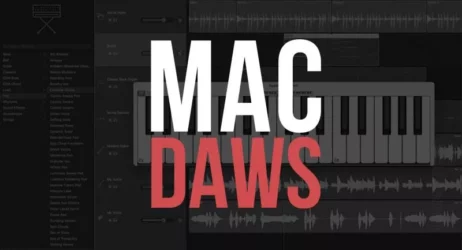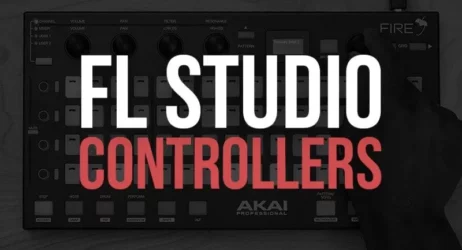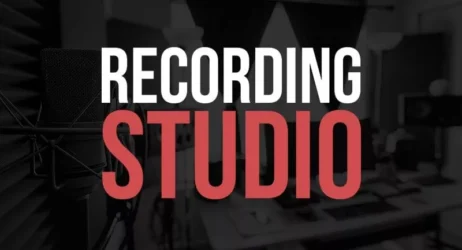This guide will answer what Audacity is, what it is used for, its features, how to download the audio editing software, and if it is safe to use.
What Is Audacity?
Audacity is a free open-source audio editing program to efficiently record and edit audio files. It has a clean and user-friendly interface that has cross-platform capability. It also comes with multiple plug-in support and libraries that enhance the software’s overall functionality.
- What Is Audacity
- What Is Audacity Used For
- Is Audacity Free
- How Do I Download Audacity
- How To Use Audacity
- Is Audacity Good For Beginners
- Can I Trust Audacity? Is Audacity Safe
- Is Audacity Hard To Learn
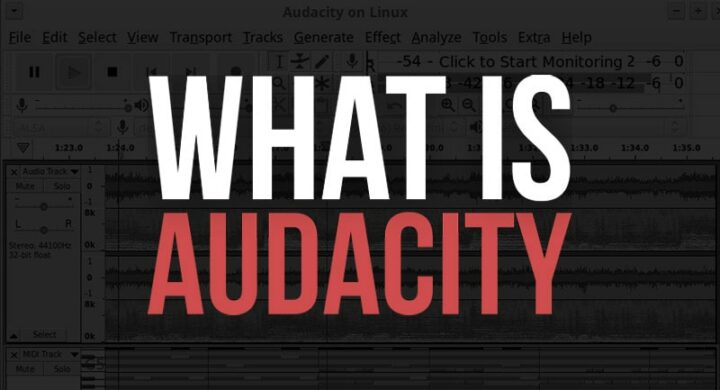
What Is Audacity?
Audacity is free-to-use open-source software that can record and edit audio clips free of cost. It packs a simple and user-friendly interface that can work on almost every operating system, including Windows, Apple macOS, and Linux.
It comes with all the essential and popular features that can compete with paid software in the market. This reason makes Audacity one of the most popular audio editing software programs on the market.
Audacity comes with a lot of essential features:
- Recording – Audacity can record all of your live audio performances using a microphone, mixer, or any other digitalized form of recordings from other media.
- Import/Export – You can import, edit and combine all sound files on one software. These recording files can be exported in many file formats and even export multiple files simultaneously.
- Sound Quality – Audacity supports 16-bit, 24-bit, and 32-bit sound quality. All the sample rates and formats are converted using high-quality dithering and resampling.
- Plug-ins – It supports all the popular Plug-ins like LV2, LADPA, Audio Unit effect, and Nyquist. Additionally, you can also write custom plug-ins.
- Editing – Audacity gives you the most accessible and carefree editing options, including cutting, copying, and deleting. Besides this, you can also do an unlimited amount of sequential Undo and Redo in a single session to go back to the number of steps you need.
- Effects – It provides you a real-time preview of all the effects that come with the LADSPA, VST, LV2, and the Audio Unit macOS. The plug-in manager is responsible for handling all the installation, addition, and removal of any effects and generators from the menu.
- Accessibility – Audacity has the capability of fully manipulating any of your tracks or selection just by using your keyboard. It packs an extensive range of keyboard shortcuts that can be used in moments of need.
- Analysis – You can visualize and select all of your frequencies using the view mode in the spectrogram. It helps you get a detailed frequency analysis by plotting a spectrum window. It also helps support the Vamp analysis plug-in.
Related: 20 Free Online Audio Editors to Edit Audio Online!
What Is Audacity Used For?
Audacity is a recorder and multi-track audio editor for Windows, macOS, Linux/GNU, and other operating systems. It is an entirely free and easy-to-use interface that can be translated into many different languages.
Audacity can be used for multiple purposes:
- Recording your computer playback (It can be done on any windows, including Vista or any later machines).
- Record any live Audio
- Convert all of your tapes and records into CDs or digital recording.
- Edit AIFF, WAV, MP2, FLAC, Ogg Vorbis, MP3 sound files.
- Use the optional libraries to support and work on AC3m M4R/M4A, Opus, WMA, and many other formats.
- Multiple editing effects include changing the tempo, speed, and pitch of a recording.
- Create unique songs by cutting, copying, or mixing sounds together
- Use Nyquist to create your plug-in effects
- And much more!
You can learn how to use Audacity to Record & Edit Audio here:
Is Audacity Free?
Yes! Audacity is free software developed and distributed under the GNU General Public License (GPL).
Such programs are called Open-Source Software because they allow the general public to study and use its source code. It also provides the freedom for its users to learn how the software operates, improve it, and then share it with others. You can download Audacity for Windows, Mac, and Linux.
How Do I Download Audacity?
To download and use Audacity, use the following instructions:
- Visit audacityteam.org/download
- Select your respective operating system from the list (Windows, Mac, and Linux). It will send you to an alternative page where the software should automatically start downloading after a few seconds.
- Navigate the directory you want it to be downloaded to and select save.
- After the download finishes, please navigate the directory and click on the file to run it.
- Select the install location and proceed with the installation
- If you are using a Mac device, double click on the .dmg file, and then from the new window, drag-and-drop the Audacity icon into the application folder. It will begin the installation; once it is finished, click on your installer and eject.
After following these steps, Audacity should be ready to use on your respective operating system.
How To Use Audacity?
Audacity is one of the most accessible audio software programs and can be easily grasped from its basics. You can follow the steps to learn how to use and operate Audacity on Windows and Mac operating systems.
Related: How To Use Audacity
Step 1: Locate & Import All the Files that You Want to Edit
You can start by importing your audio file into the software. It can work on most audio formats, including WAV, MP3, and AIFF. If you want to have a more extensive choice of audio formats, you will have to install an additional FFmpeg Library. Do remember Audacity does not have the permission to import copy-protected music files.
Step 2: Analyze Their Waveform
Analyze your audio files to detect if they have any kinds of DC offset (not centered waveform). In most cases, it is caused by using a recording with a faulty audio interface. After checking, click on normalize to fix the DC offset.
Step 3: Select & Set the Range of Audio
You can change any part of your audio clip by selecting the parts you want to change. After selecting them, you can copy-paste or duplicate any part of the audio file.
Step 4: Fade the Last Second Out
To fade the last second in Audacity, take the following steps.
- Click Skip to the End button.
- Zoom in to detect the last few seconds before your clip ends.
- Click on the waveform precisely one second before the end.
- Click on Select, then Region, then Cursor to Track End.
- After that, go to Effects and then select Fade Out.
Step 5: Export the Finished Version
After you’re finished saving your file as an Audacity Project, take the following steps to export your files.
- Click on Select File, then Export, then Export Audio
- Assign a name for the file
- Choose a directory for the saved location
- Choose the format you want to save your audio file in, like WAV, MP3, etc.
- Click on Save
Step 6: Test Your Finished Audio
After you are finished exporting your audio file, please test it out by opening it through any audio player (Windows Media Player/ Apple Music/ iTunes, etc.). If you want to make additional changes to your final version in the future, never forget to make the same changes to your Audacity project file.
Is Audacity Good For Beginners?
Yes, the program is a great audio editor for beginners. It’s free, so you don’t have to worry about wasting money, and it has all the features of other popular audio editors.
This program will function similarly to any other audio software in the market if you have experience with other audio editing programs.
Audacity has a relatively simple and easy-to-use interface that acts as the perfect starting stone for beginners who have just started and want to edit and record voices like a professional.
Check out this video for a complete Tutorial Guide to Audacity for beginners:
Can I Trust Audacity? Is Audacity Safe?
Yes! Audacity is an entirely secure software to download and install. It is completely free from any types of viruses, malware, and spyware. It will never put the security of your disk at risk or compromise it.
There was a slight misunderstanding about the recent update to Audacity’s privacy policy, which worried many users. Still, the Audacity team has rectified the issue and clarified that it was only an issue of the misinterpretation of the previous policy.
Is Audacity Hard To Learn?
No, Audacity comes with some of the most straightforward basics that any beginner can grasp. If anyone has difficulty with something, the internet is filled with video tutorials with answers to every query.
You can rest assured that Audacity will prove to be one of the most accessible software to learn when it comes to recording and multi-track editing on different operating systems.
Recommended Tools
Here are the most popular items on Amazon.
Last update on 2024-04-06 / Affiliate Disclaimer
Summary Audacity
Audacity is a free open-source audio editing program that lets you edit and record audio files efficiently. The user interface is easy to use and cross-platform. The software also comes with a variety of plug-ins and libraries that enhance its functionality.
I hope you now have a better understanding of the Audacity audio editing program and how to use it to make music or edit audio.





